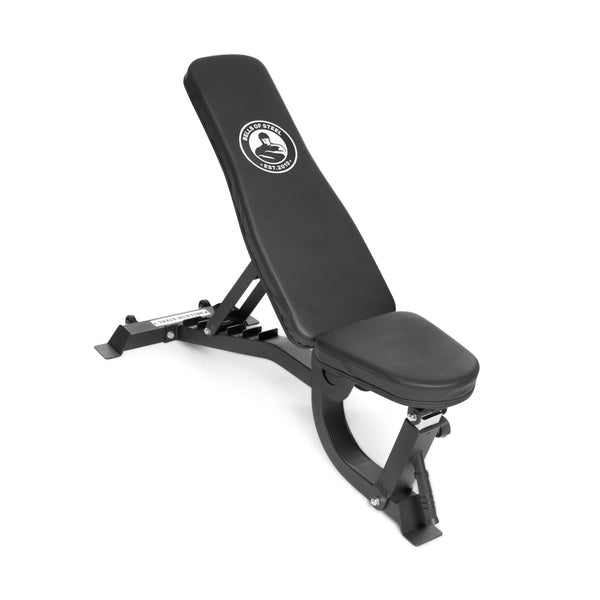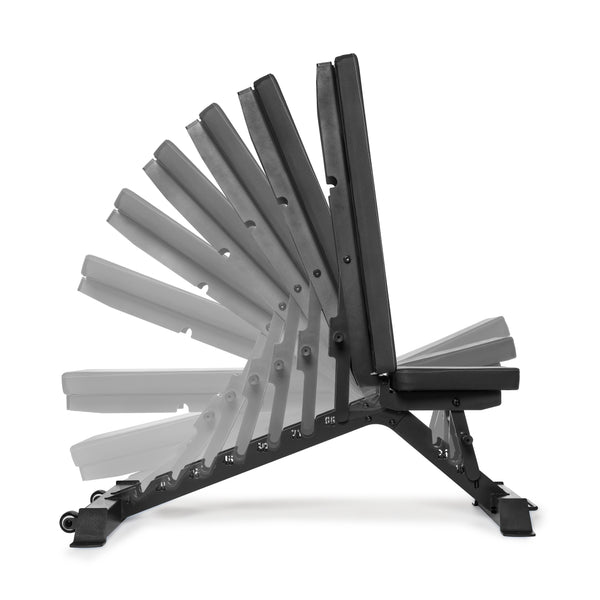Are you ready to take your home gym game to the next level? If you're looking for an exercise that targets your chest muscles like a heat-seeking missile, the decline bench press is your secret weapon. In this article, we're diving deep into the what, why, and how of the decline bench press. Prepare to unleash your inner bench press beast.
So, what exactly is this "decline bench press" we're talking about? In a nutshell, it's a strength-training exercise that primarily focuses on your pectoral muscles, also known as your chest. But here's the twist: you're not flat on your back as with a regular bench press; instead, you're on a decline bench angled downward.
Muscles in the Spotlight
Before we get into the nitty-gritty of how to perform the decline bench press, let's shed some light on the muscles it targets:- Lower Chest: The decline angle shifts the emphasis to your lower chest, helping you sculpt that enviable "shelf."
- Triceps: These bad boys get a solid workout, contributing to the power behind your press.
- Shoulders: Your front deltoids play a supporting role in the movement.
Step 1: Setup
- Adjust your bench to a downward angle—The FID Bench has got you covered.
- Lie down on the bench with your head at the lower end and your feet secure under the leg supports.
- Your back should be flat against the bench, and your eyes should be aligned with the bar.
Step 2: Grip and Stance
- Grip the barbell with both hands, slightly wider than shoulder-width apart.
- Your palms should be facing away from you, with a firm grip on the bar.
- Lift the barbell off the rack and hold it above your chest with your arms fully extended.
- Your feet should be flat on the ground, shoulder-width apart, providing a stable base.
Step 3: The Press
- Lower the barbell in a controlled manner towards your lower chest. The bar should touch your chest lightly.
- Push the barbell back up to the starting position, fully extending your arms.
- Maintain proper form throughout the exercise, keeping your back flat against the bench and your feet grounded.
Step 4: Reps and Sets
- Aim for 3-4 sets of 6-8 reps to build strength or 3-4 sets of 8-12 reps for muscle growth.
- As you get more comfortable, progressively increase the weight to continue challenging yourself.
Common Questions
Now, let's tackle some common questions you might have about the decline bench press:Q1: Is the Decline Bench Press Safe for Beginners?
Absolutely, but like any exercise, it's essential to start with a weight you can control and practice proper form. If you're new to the bench press, consider seeking guidance from a knowledgeable spotter or a personal trainer.Q2: Can Women Benefit from the Decline Bench Press?
Without a doubt! The decline bench press is a fantastic exercise for both men and women. It helps strengthen and shape the lower chest, contributing to an overall well-balanced physique.Q3: Can I Use Dumbbells Instead of a Barbell for the Decline
Bench Press?
Certainly! Dumbbells provide an excellent alternative. Just lie on a decline bench and use dumbbells instead of a barbell for a similar effect. It can even help with muscle imbalances and stability.Safety First
Before you embark on your decline bench press journey, remember these essential safety tips:- Always use a spotter when lifting heavy weights.
- Start with a manageable weight to practice your form.
- If you're lifting alone, consider using safety bars or a power rack to prevent accidents
Decline Bench Press Alternatives
Not quite ready to hang? Here are some decline bench press alternatives to try in your home gym.Cable Flyes:
- Attach D-handles to the high pulleys of a cable crossover machine.
- Stand in the middle, with one handle in each hand.
- Step forward slightly and slightly lean forward while keeping a slight bend in your elbows.
- Bring your hands together in a hugging motion, squeezing your chest muscles.
- Cable flyes are excellent for isolating the chest muscles.
Cable Crossovers:
- Similar to cable flyes, but in this exercise, you cross your hands over each other in front of your body.
- This motion creates a more dynamic and challenging exercise for your chest.
Incline Bench Press:
- Use an adjustable bench set to an incline (usually around 30-45 degrees).
- Perform a bench press with a barbell or dumbbells.
- The incline bench press primarily targets the upper chest and anterior deltoids.
Dumbbell Bench Press:
- Lie on a flat bench and use dumbbells instead of a barbell.
- This exercise engages the chest while also requiring more stabilization and balance compared to a barbell bench press.
Push-Ups:
- A classic bodyweight exercise, push-ups can be done with various hand positions to target different parts of the chest.
- To emphasize the lower chest, perform decline push-ups by elevating your feet on a bench or sturdy surface.
Landmine Press:
- Place one end of a barbell into a landmine attachment or a corner.
- Hold the other end with one hand and press it upward.
- This exercise allows for a different range of motion and recruits the chest muscles effectively.



